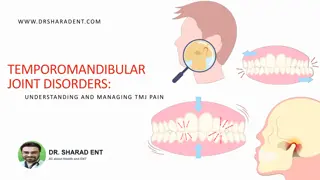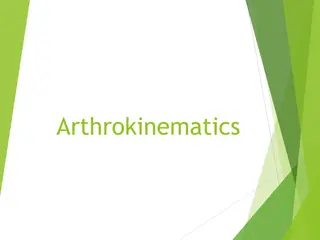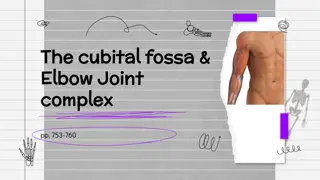
Understanding the Subtalar Joint in Foot Anatomy
Explore the anatomy of the subtalar joint, the articulation between the talus and calcaneus bones in the foot. Learn about its structure, ligaments, stability, and movements. Discover how this joint plays a crucial role in eversion and inversion movements of the foot.
Download Presentation

Please find below an Image/Link to download the presentation.
The content on the website is provided AS IS for your information and personal use only. It may not be sold, licensed, or shared on other websites without obtaining consent from the author. If you encounter any issues during the download, it is possible that the publisher has removed the file from their server.
You are allowed to download the files provided on this website for personal or commercial use, subject to the condition that they are used lawfully. All files are the property of their respective owners.
The content on the website is provided AS IS for your information and personal use only. It may not be sold, licensed, or shared on other websites without obtaining consent from the author.
E N D
Presentation Transcript
SUBTALAR JOINT BY MBBSPPT.COM
The Subtalar Joint There are just two joints between the talus and calcanean: Posterior Talocalcaneal Joint Anterior Talocalcaneonavicular Joint. The posterior talocalcaneal joint is frequently designated as subtalar joint. MBBSPPT.COM 2
The Subtalar Joint The subtalar joint is an articulation between two of the tarsal bones in the foot the talus and calcaneus. The joint is classed structurally as a synovial joint, and functionally as a plane synovial joint. MBBSPPT.COM 3
Articulating Surfaces The subtalar joint is formed between two of the tarsal bones: Inferior surface of the body of the talus The posterior talar articular surface. Superior surface of the calcaneus The posterior calcaneal articular facet. As is typical for a synovial joint, these surfaces are covered by articular cartilage. MBBSPPT.COM 5
Stability The subtalar joint is enclosed by a joint capsule, which is lined internally by synovial membrane and strengthened externally by a fibrous layer. The capsule is also supported by three ligaments: Posterior talocalcaneal ligament Medial talocalcaneal ligament Lateral talocalcaneal ligament MBBSPPT.COM 7
Additional Ligaments An additional ligament the interosseous talocalcaneal ligament acts to bind the talus and calcaneus together. It lies within the sinus tarsi (a small cavity between the talus and calcaneus), and is particularly strong; providing the majority of the ligamentous stability to the joint. The cervical ligament is lateral to sinus tarsi. It goes upward and medially from upper surface of the calcaneum to the tubercle on the inferolateral aspect of the neck of talus. It becomes tight in inversion. MBBSPPT.COM 8
Movements The subtalar joint is formed on an oblique axis and is therefore the chief site within the foot for generation of eversion and inversion movements. This movement is produced by the muscles of the lateral compartment of the leg. and tibialis anterior muscle respectively. The nature of the articulating surface means that the subtalar joint has no role in plantar or dorsiflexion of the foot. MBBSPPT.COM 9
Neurovascular Supply The subtalar joint receives supply from two arteries and two nerves. Arterial supply comes from the posterior tibial and peroneal arteries. Innervation to the plantar aspect of the joint is supplied by the medial or lateral plantar nerve, whereas the dorsal aspect of the joint is supplied by the deep peroneal nerve. MBBSPPT.COM 10
Calcaneal Fracture The calcaneus is often fractured in a crush type injury. The most common mechanism of damage is falling onto the heel from a height the talus is driven into the calcaneus. The bone can break into several pieces, known as a comminuted fracture. Upon x-ray imaging, the calcaneus will appear shorter and wider. A calcaneal fracture can cause chronic problems, even after treatment. The subtalar joint is usually disrupted, causing the joint to become arthritic. The patient will experience pain upon inversion and eversion which can make walking on uneven ground particularly painful MBBSPPT.COM 11
MBBSPPT.COM 12






















